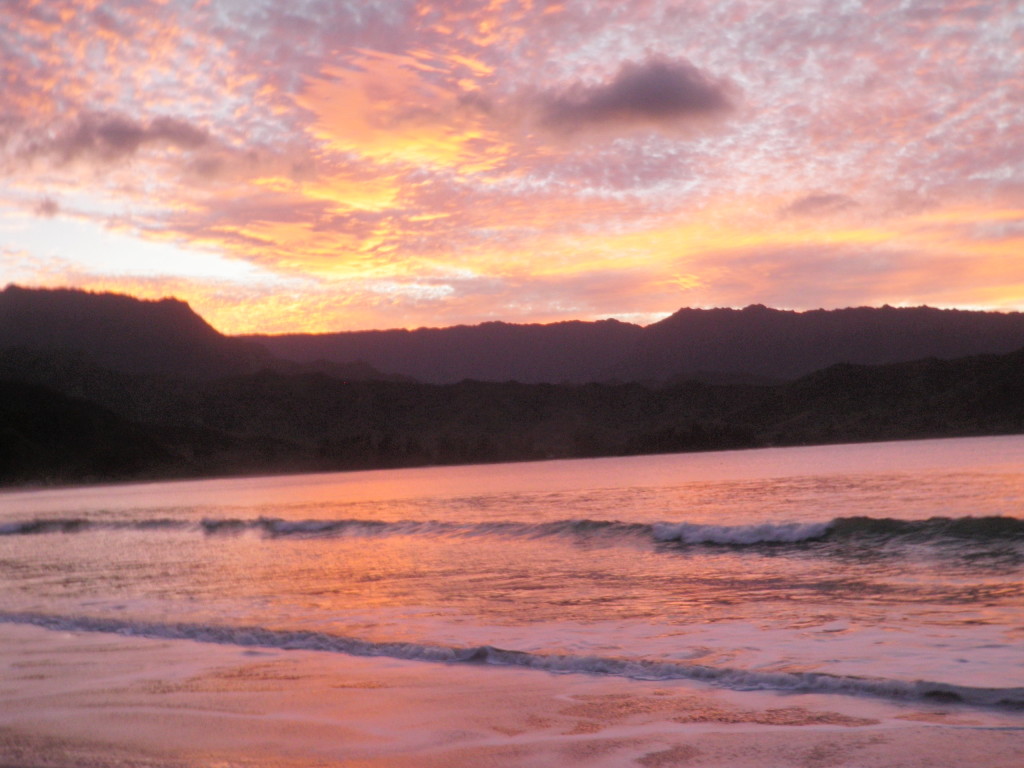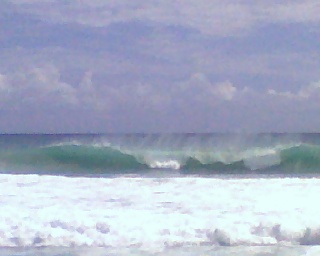The Mana Gardening Institute Serves to
Implement Quantitative Studies in Personal Empowerment
Below is a list of studies from the primary scientific literature (and some of our own) that indirectly/directly support:
Mana Sciences® – Physical empowerment
Mana Psychology® – Psychological empowerment
Mana Gardening® Techniques – Proposed Studies
*Many of the below studies are described in laymen’s terms in the Scientific Prologue of our book, Mana Gardening, Empower Yourself and Live a Better Life
![IMG_6312[1]](http://www.managardening.com/wp-content/uploads/2015/06/IMG_63121-1024x768.jpg)
Mana Sciences®
The following studies indirectly support Mana Gardening in regards to physical health:
-

Sunset on Hanalei Bay, Kauai 2010 by Dr. Shine
Malouin F, Richards CL, Durand A, et al. Effects of practice, visual loss, limb amputation and disuse on motor imagery vivid- ness. Neurorehabil Neural Repair. 2009; 23:449–463.
- A, Collet C, Nguyen VA, Malouin F, Richards C, et al. Brain activity during visual versus kinesthetic imagery: an fMRI study. Hum Brain Mapp. 2009;30: 2157–2172.
- A, Collet C, Nguyen VA, Malouin F, Richards C, et al. Functional neuroanatomical networks associated with expertise in motorimagery. Neuroimage. 2008;41:1471–1483.
- Mihara M, Miyai I, Hattori N, Hatakenaka M, Yagura H, Kawano T, Okibayashi M, Danjo N, Ishikawa A, Inoue Y, Kubota K. Neurofeedback using real-time near-infrared spectroscopy enhances motor imagery related cortical activation. PLoS One. 2012;7(3):e32234.
- Ruby P, Decety J Effect of subjective perspective taking during simulation of action: a PET investigation of agency. Nat Neurosci. 2001;4: 546–550.
- Gerardin E, Sirigu A, Lehericy S, Poline JB, Gaymard B, et al. Partially overlapping neural networks for real and imagined hand movements. Cereb Cortex. 2000;10:1093–1104.
- deCharms RC, Christoff K, Glover GH, Pauly JM, Whitfield S, et al. Learned regulation of spatially localized brain activation using real-time fMRI. Neuroimage. 2004;21:436–443.
- Lotze M, Halsband U. Motor imagery. J Physiol Paris. 2006;99: 386–395.
- Malouin F, Richards CL. Mental practice for relearning locomotor skills. Phys Ther. 2010;90(2):240-51.
- Malouin F, Richards CL, Jackson PL, et al. Brain activations during motor imagery of locomotor-related tasks: a PET study. Hum Brain Mapp. 2003;19:47–62.
- Bakker M, de Lange FP, Helmich RC, et al. Cerebral correlates of motor imagery of normal and precision gait. Neuroimage. 2008;41:998 –1010.
- Iseki K, Hanakawa T, Shinozaki J, et al. Neural mechanisms involved in mental imagery and observation of gait. Neuroimage. 2008;41:1021–1031.
- Szameitat AJ, Shen S, Sterr A. Motor imagery of complex everyday movements: an fMRI study. Neuroimage. 2007;34:702–713.
- Jackson PL, Lafleur MF, Malouin F, et al. Potential role of mental practice using motor imagery in neurological rehabilitation. Arch Phys Med Rehabil. 2001;82:1133–1141.
- Decety J, Perani D, Jeannerod M, Bettinardi V, Tadary B, et al. Mapping motor representations with positron emission tomography. Nature. 1994;371:600–602.
- Decety J, Jeannerod M, Germain M, Pastene J. Vegetative responses during imagined movement is proportional to mental effort. Behav Brain Res. 1991:42:1–5.
- Wuyam B, Moosavi SH, Decety J, et al. Imagination of dynamic exercise produced ventilatory responses which were more apparent in competitive sportsmen. J Physiol. 1995;482:713–724.
- Fusi S, Cutuli D, Valente MR, et al. Cardioventilatory responses during real or imagined walking at low speed. Arch Ital Biol. 2005;143:223–228.
- Sacco K, Cauda F, Cerliani L, et al. Motor imagery of walking following training in locomotor attention: the effect of “the tango lesson.” Neuroimage. 2006;32:1441–1449.
- Dickstein R, Deutsch JE. Motor imagery in physical therapist practice. Phys Ther. 2007;87:942–953.
- Tamir R, Dickstein R, Huberman M. Integration of motor imagery and physical practice in group treatment applied to subjects with Parkinson’s disease. Neurorehabil Neural Repair.2007;21:68 –75.
- Murphy SM. Imagery interventions in sport. Med Sci Sports Exerc. 1994;26:486–494.
- Guillot A, Moschberger K, Collet C. Coupling movement with imagery as a new perspective for motor imagery practice. Behav Brain Funct. 2013;Feb 20;9(1):8.
- Moran A, Guillot A, Macintyre T, Collet C. Re-imagining motor imagery: building bridges between cognitive neuroscience and sport psychology. Br J Psychol. 2012;103(2):224-47.
- Anema HA, de Haan AM, Gebuis T, Dijkerman HC. Thinking about touch facilitates tactile but not auditory processing. Exp Brain Res. 2012; 218(3):373-80.

Surf at Flies, Oahu, Hawaii by Dr. Shine 2007
Mana Psychology®
The following studies indirectly support Mana Gardening in regards to psychological health:
- Polage DC. Fabrication inflation increases as source monitoring ability decreases. Acta Psychol. 2012;139(2):335-42.
- Scoboria A, Mazzoni G, Jarry JL, Bernstein DM. Personalized and not general suggestion produces false autobiographical memories and suggestion-consistent behavior. Acta Psychol. 2012;139(1):225-32.
- Konorski J. Conditioned Reflexes and Neuron Organization. Cambridge: Cambridge University Press. (1948) p 134.
- Kaptchuk TJ, Friedlander E, Kelley JM, Sanchez MN, et al. Placebos without Deception: A Randomized Controlled Trial in Irritable Bowel Syndrome. PLoS ONE. 2010;5 (12):e15591.
- Miller FG, Colloca L, Kaptchuk TJ. The placebo effect: illness and interpersonal healing. Perspec Biol Med. 2009;52: 518–39.
- Cobb LA, Thomas GI, Dillard DH, Merendino KA, Bruce RA. An evaluation of internal-mammary-artery ligation by a double-blind technic. N Engl J of Med. 1959;260 (22):1115–8.
- Benson H, McCallie DP. Angina pectoris and the placebo effect. N Engl J of Med. 1979;300 (25): 1424–9.
- Moseley JB, O’Malley K, Petersen NJ, et al. “A controlled trial of arthroscopic surgery for osteoarthritis of the knee”. N Engl J of Med. 2002;347 (2): 81–8.
- Ikemi Y, Nakagawa S. A psychosomatic study of contagious dermatitis. Kyoshu J Med Sci 1962;13: 335–50.
- O’Boyle DJ, Binns AS, Sumner JJ. On the efficacy of alcohol placebos in inducing feelings of intoxication. Psychopharmacol. 1994;115 (1–2): 229–36.
- Flaten MA, Simonsen T, Olsen H. Drug-related information generates placebo and nocebo responses that modify the drug response. Psychosom Med. 1999;61 (2):250–5.
- Fillmore MT, Mulvihill LE, Vogel-Sprott M. “The expected drug and its expected effect interact to determine placebo responses to alcohol and caffeine”. Psychopharmacol. 1994;115(3):383–8.
- Kirsch I. Specifying non-specifics: Psychological mechanism of the placebo effect. The Placebo Effect: An Interdisciplinary Exploration. Cambridge: Harvard University Press. (1997) p. 166–86.
- Buckalew LW, Ross S. Relationship of perceptual characteristics to efficacy of placebos. Psychol Rep. 1981;49 (3): 955–61.
- Price DD, Craggs J, Verne GN, Perlstein WM, Robinson ME. Placebo analgesia is accompanied by large reductions in pain-related brain activity in irritable bowel syndrome patients. Pain. 2007;127(1-2):63-72.
- Kirsch I, Weixel LJ. Double-blind versus deceptive administration of a placebo. Behav Neurosci, 1988;102(2),319-323.
- Keller PE. Mental imagery in music performance: underlying mechanisms and potential benefits. Ann N Y Acad Sci. 2012;1252:206-13.
- Kamalani KT. Mana Psychology® A New Approach to Neurocognitive Disorders using Mana Psychology, A Case Study of Navigation. Mana Gardening Institute, LLC. 2017.
- Kamalani KT. Mana Psychology® Family Therapy for Military Personnel and Their Dependents, Mana Gardening Institute, LLC. 2017.
- Kamalani KT. Mana Psychology® for Alleviating Cognitive Disorders Related to Aging. Mana Gardening Institute, LLC. 2017.
- Kamalani KT. Mana Psychology® Optimizing Relaxation in Mild PTSD with On-The-Go Meditation Group Therapy. Mana Gardening Institute, LLC. 2017.
- Kamalani KT. Mana Psychology® Survey Study Synopsis-Empowering University Students to Avoid the Cognitive Decline Associated with Aging. Mana Gardening Institute, LLC. 2017. Mana Psychology conducted a scientific study including a stratified sampling of university students versus seniors on cognitive decline.
Mana Gardening®
Proposed Studies:

Rainbow on West Side Oahu at elevation by Dr. Shine 2008
Let us introduce you right now to the future of medicine. Have you heard of the term Positive Psychology? If not, it is time for you to take notice!
Positive Psychology is the scientific study of factors that add to long-term well-being.The foundations of Positive Psychology turn out to be good feelings, good character/values, and good relationships.
If you want to explore more, here is a suggestion! We are not alone in our desire to change our world for the better!
Achor, S. (2010). The happiness advantage. New York: Broadway Books. Like Ben-Shahar, Achor is a professor of positive psychology at Harvard. This book reveals the most important discoveries coming out of modern psychology. Immensely readable, Achor convinces us that we can change. The subtitle of his book is The Seven Principles of Positive Psychology That Fuel Success and Performance at Work.
Proposed studies in Mana Gardening:
- Pre- and Post 8-week Mana Gardening training assessment of brain activity and stress tests in healthy volunteers
- Pre- and Post 8-week Mana Gardening training assessment of brain activity and stress tests in PTSD patients
![IMG_6312[1]](http://www.managardening.com/wp-content/uploads/2015/06/IMG_63121-1024x768.jpg)